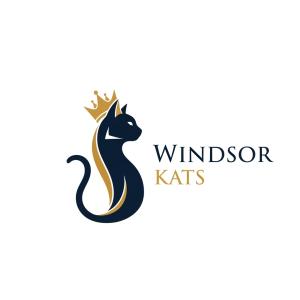History of the Maine coon cat
The Enigmatic Past of the Maine Coon: From Seafaring Mousers to Gentle Giants
The Maine Coon cat, a breed renowned for its impressive size, rugged appearance, and gentle disposition, boasts a history as rich and captivating as its luxurious coat. While its exact origins are shrouded in a blend of folklore and plausible theories, the most accepted narrative points to a natural development on the rocky shores of Maine, shaped by the harsh New England climate and the eclectic mix of felines brought by early seafarers.
From Maritime Myths to Accepted Origins
The most prevalent and logical theory suggests that the Maine Coon is the result of crossbreeding between native American shorthaired domestic cats and longhaired breeds brought to North America by European sailors. These seafaring cats, likely a mix of Angoras and other long-haired varieties, were prized for their mousing abilities on long voyages. Once ashore in the ports of Maine, they interbred with the local cat population, producing offspring with the robust build, dense fur, and tufted ears and paws necessary to survive the cold, unforgiving winters.
However, the breed's history is also peppered with more imaginative tales. One popular, though biologically impossible, myth claims the Maine Coon is a hybrid of a domestic cat and a raccoon, citing the cat's bushy, ringed tail as "evidence." Another fanciful story links their ancestry to six of Marie Antoinette's prized Turkish Angora cats, supposedly sent to Maine for safekeeping during the French Revolution. A third legend attributes the breed to a sea captain named Coon, whose long-haired cats would accompany him ashore, leading to the locals referring to their kittens as "Coon's cats." While these stories add a layer of romanticism to the breed's past, they are not supported by genetic evidence.
Rise to Fame, Decline, and Resurgence
By the mid-19th century, the Maine Coon had established itself as a distinct and hardy breed, particularly valued by farmers for its superior hunting skills. Their popularity grew, and they became a common sight at local cat shows. The first recorded mention of a Maine Coon in literature appeared in 1861, and in 1895, a female brown tabby Maine Coon named Cosey won "Best in Show" at the first major cat show in the United States, held at Madison Square Garden in New York City.
The turn of the 20th century, however, saw a decline in the Maine Coon's popularity with the introduction of more exotic long-haired breeds like the Persian. For a time, the breed was even declared extinct in the 1950s.
Fortunately, dedicated breeders in Maine and surrounding states worked to preserve the breed. The Central Maine Cat Club was formed in the 1950s to promote and protect the Maine Coon. Their efforts paid off, and the breed slowly began to regain its former popularity. In 1976, the Cat Fanciers' Association (CFA) granted the Maine Coon championship status, solidifying its place in the world of pedigreed cats.
Today, the Maine Coon is one of the most popular cat breeds globally, cherished not only for its striking looks but also for its affectionate, "gentle giant" personality. This native American longhair has journeyed from being a practical mouser on ships and farms to a beloved companion in homes around the world, a testament to its enduring charm and resilient history.
